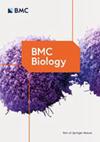miRNA 同工型、tRNA 衍生片段和 rRNA 衍生片段的亚细胞分布取决于核苷酸序列和细胞类型
IF 4.5
1区 生物学
Q1 BIOLOGY
引用次数: 0
摘要
微RNA异构体(isomiRs)、tRNA衍生片段(tRFs)和rRNA衍生片段(rRFs)代表了细胞中发现的大多数小型非编码RNA(sncRNA)。这三类RNA可调节信使RNA(mRNA)和蛋白质的丰度,并在疾病中失调。迄今为止的实验研究都假定这些分子的亚细胞分布已被充分了解,与细胞类型无关,而且 sncRNA 的所有异构体都相同。我们测试了这些假设,研究了来自同一组织和同性供体的三种细胞系的生物复制中异构Rs、tRFs和rRFs的亚细胞分布,这些细胞系模拟了相同的癌症亚型。在每个细胞系中,我们分析了细胞核、细胞质、整个线粒体(MT)、有丝分裂体(MP)和整个细胞中的 isomiRs、tRFs 和 rRFs。利用我们开发的严格数学模型,我们考虑了交叉分馏污染和技术误差,并对测量丰度进行了相应调整。对调整后丰度的分析表明,isomiRs、tRFs 和 rRFs 显示出复杂的亚细胞分布模式。这些模式取决于每种 sncRNA 的确切序列和细胞类型。即使在同一细胞系中,序列相差几个核苷酸(nts)的同种sncRNA也会有不同的亚细胞分布。具有相似序列的 SncRNA 在细胞系内和细胞系间具有不同的亚细胞分布,这表明每种异构体可能具有不同的功能。未来对isomiRs、tRFs和rRFs的计算和实验研究将需要区分每种分子的不同异构体,并考虑每种异构体在当前细胞系中亚细胞分布的差异。越来越多的证据表明,isomiRs、tRFs、rRFs、tRNAs 和 rRNAs 遵循复杂的胞内转运规则,这些发现为这一事实增添了新的证据,但要排除对观察到的 sncRNAs 亚细胞分布的其他解释,还需要进一步的研究。本文章由计算机程序翻译,如有差异,请以英文原文为准。
The subcellular distribution of miRNA isoforms, tRNA-derived fragments, and rRNA-derived fragments depends on nucleotide sequence and cell type
MicroRNA isoforms (isomiRs), tRNA-derived fragments (tRFs), and rRNA-derived fragments (rRFs) represent most of the small non-coding RNAs (sncRNAs) found in cells. Members of these three classes modulate messenger RNA (mRNA) and protein abundance and are dysregulated in diseases. Experimental studies to date have assumed that the subcellular distribution of these molecules is well-understood, independent of cell type, and the same for all isoforms of a sncRNA. We tested these assumptions by investigating the subcellular distribution of isomiRs, tRFs, and rRFs in biological replicates from three cell lines from the same tissue and same-sex donors that model the same cancer subtype. In each cell line, we profiled the isomiRs, tRFs, and rRFs in the nucleus, cytoplasm, whole mitochondrion (MT), mitoplast (MP), and whole cell. Using a rigorous mathematical model we developed, we accounted for cross-fraction contamination and technical errors and adjusted the measured abundances accordingly. Analyses of the adjusted abundances show that isomiRs, tRFs, and rRFs exhibit complex patterns of subcellular distributions. These patterns depend on each sncRNA’s exact sequence and the cell type. Even in the same cell line, isoforms of the same sncRNA whose sequences differ by a few nucleotides (nts) can have different subcellular distributions. SncRNAs with similar sequences have different subcellular distributions within and across cell lines, suggesting that each isoform could have a different function. Future computational and experimental studies of isomiRs, tRFs, and rRFs will need to distinguish among each molecule’s various isoforms and account for differences in each isoform’s subcellular distribution in the cell line at hand. While the findings add to a growing body of evidence that isomiRs, tRFs, rRFs, tRNAs, and rRNAs follow complex intracellular trafficking rules, further investigation is needed to exclude alternative explanations for the observed subcellular distribution of sncRNAs.
求助全文
通过发布文献求助,成功后即可免费获取论文全文。
去求助
来源期刊

BMC Biology
生物-生物学
CiteScore
7.80
自引率
1.90%
发文量
260
审稿时长
3 months
期刊介绍:
BMC Biology is a broad scope journal covering all areas of biology. Our content includes research articles, new methods and tools. BMC Biology also publishes reviews, Q&A, and commentaries.
 求助内容:
求助内容: 应助结果提醒方式:
应助结果提醒方式:


